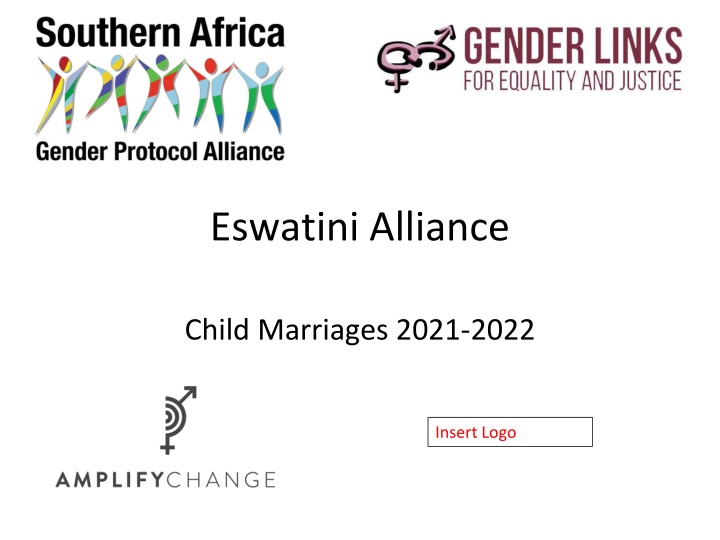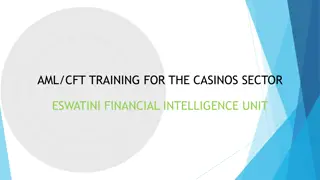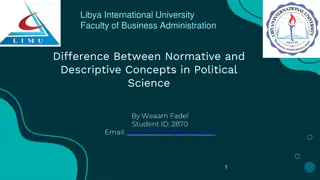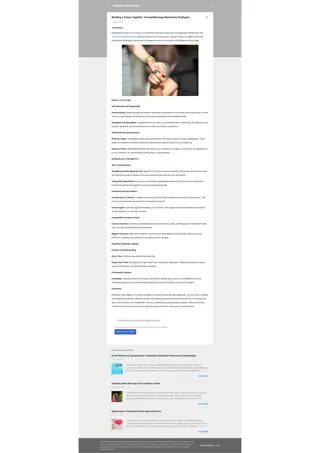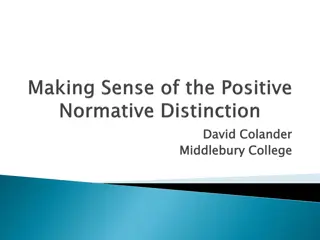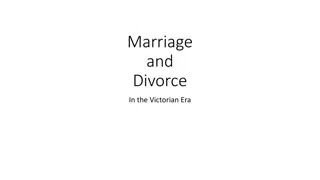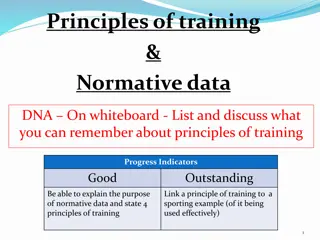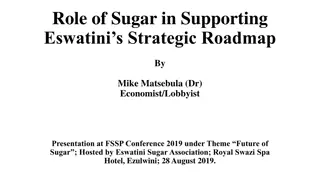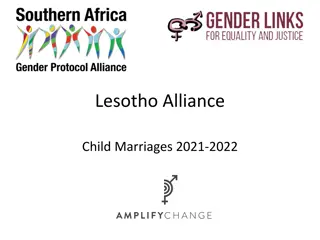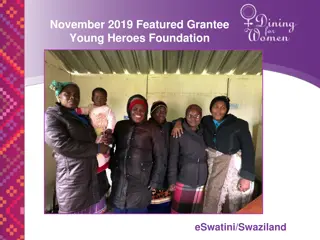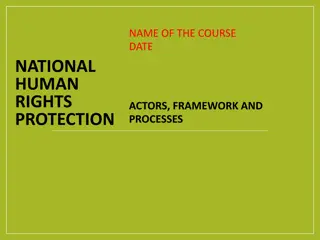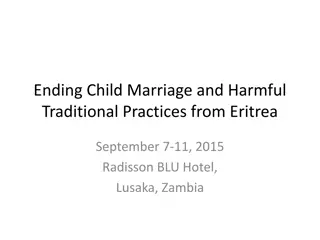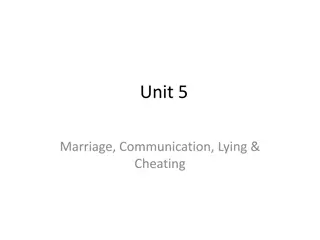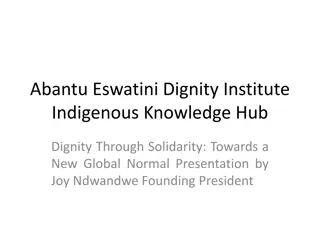Addressing Child Marriages in Eswatini: Situation, Laws, and Normative Frameworks
Key facts, normative frameworks, and current situation surrounding child marriages in Eswatini. Learn about the laws in place and advocacy efforts to combat this harmful practice in the country.
Download Presentation

Please find below an Image/Link to download the presentation.
The content on the website is provided AS IS for your information and personal use only. It may not be sold, licensed, or shared on other websites without obtaining consent from the author.If you encounter any issues during the download, it is possible that the publisher has removed the file from their server.
You are allowed to download the files provided on this website for personal or commercial use, subject to the condition that they are used lawfully. All files are the property of their respective owners.
The content on the website is provided AS IS for your information and personal use only. It may not be sold, licensed, or shared on other websites without obtaining consent from the author.
E N D
Presentation Transcript
Eswatini Alliance Child Marriages 2021-2022 Insert Logo
What this will cover Situation analysis SWOT Key actors Key targets Objectives Messages Action plan short term Action plan long term
Situation analysis KEY FACTS Eswatini Early child marriages Minimum legal age of consent to marriage for women (Marriage Act of 1964) Minimum legal age of consent to marriage for men (Marriage Act of 1964) Exceptions for women Exceptions for men 16 18 18 and above 18 and above Percentage young women married by age 18 Percentage young women married by age 15 (most are not documented) Attitudes Survey % That Agree or Strongly Agree - Families should spend less money on the education of daughters as on the education of sons 5% 1% 10
Normative frameworks SDGs 5.3: Eliminate all harmful practices, such as child, early, and forced marriage and female genital mutilation. CEDAW Article 16(b) The same right freely to choose a spouse and to enter into marriage only with their free and full consent; Article 16 (2) The betrothal and the marriage of a child shall have no legal effect, and all necessary action, including legislation, shall be taken to specify a minimum age for marriage and to make the registration of marriages in an official registry compulsory. ICPD 6.11: Countries should create a socio-economic environment conducive to the elimination of all child marriages and other unions as a matter of urgency and should discourage early marriage. Maputo Protocol Article 6(a) no marriage shall take place without the free and full consent of both parties; Article 6(b) the minimum age of marriage for women shall be 18 years. SADC Protocol Article 8.2a: No person under the age of 18 shall marry.
LAWS IN THE COUNTRY Is there a stand alone Model Law on Child Marriages in Eswatini? Yes there is, a Children s Protection and Welfare Act (CPWA) of 2012 When was it adopted? In 2012. How is it being implemented? The Act talks about the rights of all children and the responsibilitites of parents, guardians and all stakeholders involved in the care and welfare of children, including government departments, community leaders and community members, for protecting children from abuse, harm and neglect and to do this, many different services and resources need to be made available for children Are advocacy groups aware of the SADC PF Model Law on Child Marriages? No, we not aware. Has it been domesticated? No it hasn t.
Current situation Eswatini is one of six SADC countries with clawbacks. This means they provide for gender equality on one hand but make other guarantees that undermine its provision. The dual legal systems of Eswatini clash when it comes to Child Marriage. (The SODVA 2018 and CPWA 2012 does clash on its own). Our Constitution is not in harmony with the Marriage Bill of 1964. What is being done? Review the Marriage Act of 1964 and amend accordingly. Sensitization of the SODV Act of 2018 by civil society and Eswatini Government.
SWOT STRENGTHS WEAKNESSES THREATS OPPORTUNITIES Enactment and Amendments on child marriage laws No proper documentation of child marriage cases Cultural norms Increase access to information Implementation gaps in legislation framework Lobbying and advocacy on child marriages No political will
Key actors (partners) DPMO MoET Ministry of Health CSO FBO Traditional Leaders (TLs) Parliament, enactment of more legislations and implimenting ENYC UN Agencies (UNFPA,UNICEF, UNDP,....)
Key targets/ messages TARGET GROUPS MESSAGES Teachers career guidance Give me a chance to be a child/ nginike litfuba lekuba ngumntfwana Church leaders pastors Show me the way Sunday school teachers NCPs/Lidladla Community leaders Girls are not Brides Bagcugcuteli/Rural Health Motivators Youth
Objectives CAPACITY BUILDING -to capacitate community leaders about legislations, policies and acts related to child marriage -to capacitate on the rights of the girl child AWARENESS RAISING AND ADVOCACY -to empower young girls on opportunities available for them -to empower community members to help enforce legislations, policies and acts RESOURCE MOBILISATION -to mobilize resources for the campaign implementation
Action plan short term ACTION WHO WHEN Capacity building (workshops, radio, etc Stakeholders (CSOs, government) 6 Months Awareness raising and advocacy Stakeholders (CSOs, government) 6 Months Resource Mobilization Stakeholders (CSOs, government) 6 Months
Action plan long term ACTION WHO WHEN Capacity building (workshops, radio shows, dialogues-community & schools, etc.) Have Feedback sessions on the impacts. Stakeholders (CSOs, government, development partners, private sector) 5 years (Monthly and quarterly reports, annual reports, documentation and evaluation) Awareness raising and advocacy ( campaign ads, via the arts- social media, TV, banners, radio..) Stakeholders (CSOs, government, influencers, private sector) 5 years (Monthly and quarterly reports, annual reports, documentation and evaluation) Resource Mobilization (partnership) Stakeholders (CSOs, government) 5 years (Monthly and quarterly reports, annual reports, documentation and evaluation)
